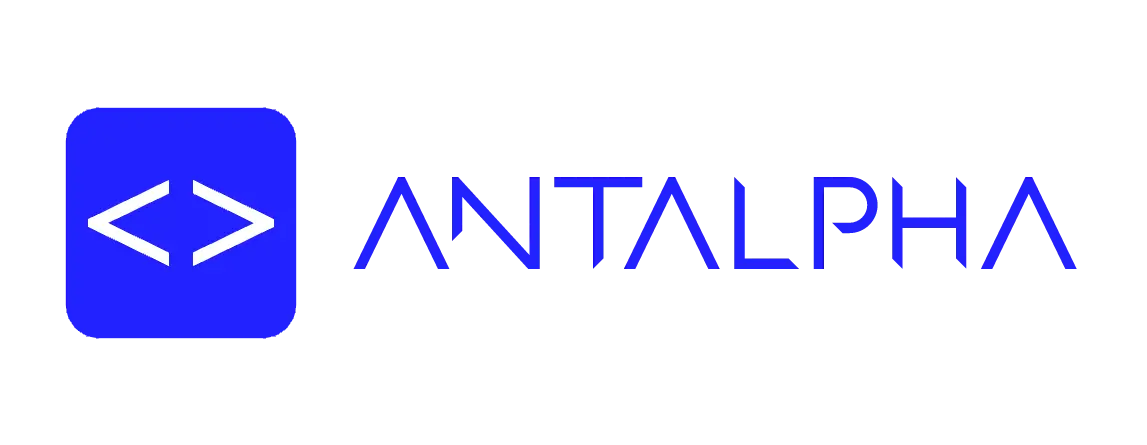Strategy Testing 04 | OKX and AICoin Research Institute: Funding Fee Arbitrage Strategy
Author: OKX
OKX, in collaboration with the premium data platform AICoin, has initiated a series of classic strategy studies aimed at helping users better understand and learn about different strategies through core dimensions such as data testing and strategy characteristics, thereby avoiding blind usage.
Funding Rate Arbitrage is a widely used arbitrage strategy in the cryptocurrency market, aimed at profiting from the differences in funding rates between perpetual contracts and the spot market. The core of funding rate arbitrage lies in utilizing the funding rate mechanism of perpetual contracts. A perpetual contract is a derivative contract with no expiration date, and the funding rate is used to balance the price difference between the contract and the spot price. The funding rate can be positive or negative, depending on the market's supply and demand dynamics. When the funding rate is positive, long positions pay funding fees to short positions; conversely, when the funding rate is negative, short positions pay funding fees to long positions.
Arbitrage Strategy Operations:
- Forward Arbitrage: When the funding rate is positive, traders can buy the spot and short an equal amount of perpetual contracts to earn funding fee income.
- Reverse Arbitrage: When the funding rate is negative, traders can borrow coins to sell the spot and long an equal amount of perpetual contracts to earn funding fee income.
This arbitrage strategy typically settles funding fees every 8 hours, but under extreme market conditions, the settlement frequency may be higher to curb excessive speculation.
In this 04th issue strategy test, we will introduce the funding rate arbitrage strategy, using three major data models for testing:
Model 1: Funding Rate Arbitrage for BTC and ETH in a sideways market
Model 2: Funding Rate Arbitrage for BTC and ETH in a downtrend
Model 3: Funding Rate Arbitrage for BTC and ETH in an uptrend
Current data testing operation standards: The opening condition is that the price difference rate is greater than 0.05% and the funding rate is greater than 0; the closing condition is that the price difference rate is less than -0.05%.
One-sentence summary of funding rate arbitrage: Funding rate arbitrage is suitable for traders who wish to earn returns in the cryptocurrency market with relatively low risk, and it is also suitable for professionals with certain market analysis skills and trading experience.
Advantages and Disadvantages Comparison

Specifically, the applicable groups for funding rate arbitrage mainly include the following categories:
1) Traders seeking stable returns: Funding rate arbitrage is often considered a relatively low-risk strategy, suitable for those who wish to earn returns through stable cash flow. These traders may be cautious about the volatility of the cryptocurrency market and are therefore more inclined to achieve relatively low-risk returns through arbitrage strategies.
2) Professional traders and risk managers: Since funding rate arbitrage involves complex market analysis and real-time trading execution, it typically requires a certain level of market knowledge and experience. Therefore, professional traders and risk managers are the main applicable group for this strategy. They can utilize the differences in funding rates in the market to execute precise trading operations, thereby locking in profits.
3) Traders looking to utilize idle funds: For those holding idle funds (such as USDT), funding rate arbitrage provides a way to utilize these funds to earn additional returns. These traders may be cautious about the current market prices but wish to earn returns through arbitrage.
However, while funding rate arbitrage is considered a relatively low-risk strategy, there are still some risks to be aware of:
1) Market volatility risk: The high volatility of the cryptocurrency market can lead to sharp price fluctuations, affecting changes in funding rates. This volatility may make arbitrage operations difficult to profit from, or even lead to losses.
2) Liquidity risk: There may be differences in liquidity and trading volume between different exchanges, and low liquidity can lead to wider bid-ask spreads, increasing trading costs and reducing potential profits. Additionally, low liquidity may make it difficult to execute trades, and market orders may result in significant price slippage.
3) Funding rate change risk: Funding rates are not fixed and may fluctuate with changes in market supply and demand. When the direction of the funding rate changes unfavorably, it may be necessary to adjust or close positions promptly to avoid losses.
4) Trading costs: Arbitrage operations involve multiple trades, and each trade incurs fees. These costs may erode arbitrage profits, especially in the case of frequent trading.
5) Operational risk: Arbitrage strategies require trading simultaneously in different markets, ensuring that orders can be executed at the same quantity and price. Any operational errors or delays may lead to arbitrage failure.
Nevertheless, although funding rate arbitrage strategies are considered relatively low-risk, traders still need to conduct thorough market research and risk management to minimize potential risks and optimize returns. Funding rate arbitrage has the following advantages:
1) Stable returns: Funding rate arbitrage is a market-neutral strategy that earns funding fees by holding hedged positions, allowing traders to obtain stable income regardless of market price fluctuations. This strategy is similar to money market funds and is suitable for traders seeking stable cash flow.
2) Lower risk: Compared to high-risk leveraged futures trading, funding rate arbitrage carries lower risk, as it does not rely on predicting market prices but instead profits from differences in funding rates. This strategy reduces market risk by hedging positions in the spot and perpetual contracts.
3) Market neutrality: Funding rate arbitrage is a market-neutral strategy, meaning it can operate in bull, bear, or sideways markets. Traders focus on the differences in funding rates rather than overall price trends, making this strategy flexible under any market conditions.
4) Exploiting market inefficiencies: This strategy can take advantage of temporary inconsistencies in funding rates in the market, capturing additional returns that traditional trading cannot achieve.
5) Flexibility: The funding rate arbitrage strategy allows traders to operate across different cryptocurrencies and stablecoins, providing flexible trading options. Additionally, traders can arbitrage based on differences in funding rates between different exchanges, further increasing potential returns.
Overall, funding rate arbitrage has become the preferred strategy for many traders in the cryptocurrency market seeking stable returns due to its stable income, lower risk, and market-neutral characteristics.
Model One
This model is: Funding Rate Arbitrage for BTC and ETH in a sideways market

Image 1: Funding Rate Arbitrage between BTCUSDT perpetual and BTCUSDT spot; Source: AICoin

Image 2: Funding Rate Arbitrage between BTCUSDT perpetual and BTCUSDT spot; Source: AICoin


Image 3: Funding Rate Arbitrage between ETHUSDT perpetual and ETHUSDT spot; Source: AICoin

Image 4: Funding Rate Arbitrage between ETHUSDT perpetual and ETHUSDT spot; Source: AICoin

Model Two
This model is: Funding Rate Arbitrage for BTC and ETH in a downtrend

Image 5: Funding Rate Arbitrage between BTCUSDT perpetual and BTCUSDT spot; Source: AICoin

Image 6: Funding Rate Arbitrage between ETHUSDT perpetual and ETHUSDT spot; Source: AICoin

Model Three
This model is: Funding Rate Arbitrage for BTC and ETH in an uptrend

Image 7: Funding Rate Arbitrage between BTCUSDT perpetual and BTCUSDT spot; Source: AICoin

Image 8: Funding Rate Arbitrage between BTCUSDT perpetual and BTCUSDT spot; Source: AICoin


Image 9: Funding Rate Arbitrage between ETHUSDT perpetual and ETHUSDT spot; Source: AICoin

Image 10: Funding Rate Arbitrage between ETHUSDT perpetual and ETHUSDT spot; Source: AICoin

Analysis and Summary
Comparing the performance of funding rate arbitrage under the three models from different dimensions such as return performance, annualized return rate, and market adaptability.
In terms of return performance: Model three provides the highest total return and annualized return rate in an uptrend, reflecting that funding rate arbitrage can effectively capture price difference opportunities in a bull-dominated market. Model two also performs well in a downtrend, especially with ETH, demonstrating the strategy's adaptability in different market environments. Model one shows relatively lower returns in a sideways market, indicating fewer arbitrage opportunities in a market with limited price fluctuations, likely due to lower volatility, more stable funding rates, and cautious market participants.
In terms of annualized return rate: Model two shows outstanding annualized return rates in a downtrend, especially with ETH, indicating that funding rate arbitrage can still maintain a high return level in a bear-dominated market. Model one has a relatively low annualized return rate during sideways fluctuations, highlighting the impact of market conditions on arbitrage strategies.
In terms of market adaptability: The funding rate arbitrage strategy can function in different market cycles (uptrend, downtrend, sideways), but the level of returns and performance is significantly influenced by market conditions. Models two and three outperform model one, suggesting that funding rate arbitrage strategies have greater profit potential in markets with higher price volatility.
From the above analysis, funding management strategies demonstrate strong flexibility and adaptability across different market cycles. In bull or bear-dominated markets, the strategy effectively reduces potential risks while maintaining stable returns. In a sideways or fluctuating market, although the benefits are relatively lower, it still provides a certain level of return stability. Traders should always pay attention to changes in market conditions and adjust their strategies accordingly to maximize returns.
In simple terms, this strategy performs well under various market conditions. In rising or falling markets, it can relatively reduce risks and maintain stable returns. In a fluctuating market, although the returns are lower, it can still provide reliable performance. Traders only need to adjust their strategies based on market changes to maximize returns.
OKX & AICoin Funding Rate Arbitrage
Currently, OKX strategy trading offers convenient and diversified strategy varieties.
Arbitrage generally refers to earning interest rate differentials between different markets with extremely low risk through hedging or swapping. Common arbitrage trading methods include funding rate arbitrage, spot-futures arbitrage, and inter-futures arbitrage.
Arbitrage users need to monitor two markets in real-time during arbitrage trading and place orders simultaneously, ensuring that both orders are executed as closely as possible to avoid slippage. Therefore, OKX provides this strategy tool to assist users in improving efficiency and execution accuracy during arbitrage. In actual arbitrage, users can choose suitable arbitrage combinations based on the arbitrage order information calculated by the platform. Quick access to OKX arbitrage orders: https://www.okx.com/zh-hans/trade-spot-strategy/btc-usdt
How to access more strategy trading on OKX? Users can enter the "Trading" section of the OKX APP or official website, switch to "Strategy Trading" mode, and then click on the strategy square or create a strategy to start the experience. In addition to creating strategies independently, the strategy square also offers "Quality Strategies" and "Quality Strategies from Strategy Leaders," allowing users to copy strategies or follow them.
OKX strategy trading has multiple core advantages, such as ease of operation, low fees, and security guarantees. In terms of operation, OKX provides intelligent parameters to help users set trading parameters more scientifically; it also offers text and video tutorials to help users quickly get started and master the platform. Regarding fees, OKX has comprehensively upgraded its fee rate system, significantly reducing user trading fees. In terms of security, OKX has a security team composed of top global experts, providing bank-level security protection.
How to access AICoin's funding rate arbitrage strategy? In the left sidebar of the AICoin product, users can find "Arbitrage Robot" under the "Strategy" option. After clicking into this interface, users can select funding rate arbitrage strategies such as "Automatic Coin Earning," "Forward Arbitrage," or "Reverse Arbitrage" in the "Arbitrage Opportunities" tab at the top.
Disclaimer
This article is for reference only and represents the author's views, not the position of OKX. This article does not intend to provide (i) trading advice or recommendations; (ii) offers or solicitations to buy, sell, or hold digital assets; (iii) financial, accounting, legal, or tax advice. We do not guarantee the accuracy, completeness, or usefulness of such information. Holding digital assets (including stablecoins and NFTs) involves high risks and may fluctuate significantly. You should carefully consider whether trading or holding digital assets is suitable for you based on your financial situation. Please consult your legal/tax/trading professionals regarding your specific situation. You are responsible for understanding and complying with applicable local laws and regulations.









